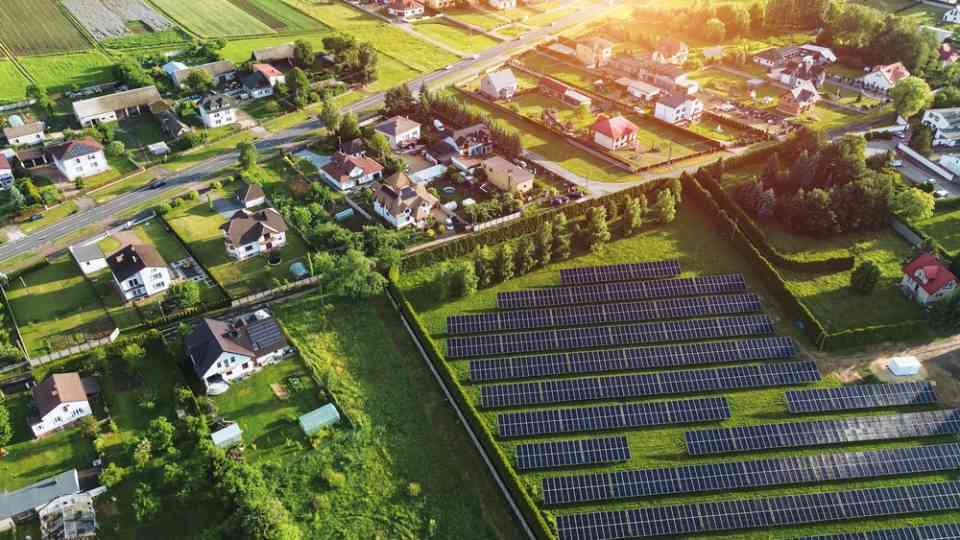Renewable energy, spearheaded by solar power, is on track to supply nearly half of the world’s electricity demand by the end of this decade, according to a new report from the International Energy Agency (IEA). The report highlights the rapid expansion of renewable power, driven by supportive policies and favorable economic conditions, which is expected to result in a global increase in renewable capacity equivalent to the combined power capacity of China, the European Union, India, and the United States.
The Renewables 2024 report, the IEA’s flagship publication on the sector, reveals that over 5,500 gigawatts (GW) of new renewable capacity will be added between 2024 and 2030 – nearly three times the increase seen between 2017 and 2023. China is projected to account for almost 60% of this growth, making it home to nearly half of the world’s renewable power capacity by 2030, up from a third in 2010. While China will lead in total volume, India is expected to grow at the fastest rate among major economies.
Solar photovoltaic (PV) technology is forecast to drive 80% of the growth in global renewable capacity through 2030, thanks to both large-scale solar farms and a rise in rooftop installations by businesses and households. Despite recent challenges, the wind sector is also set to double its expansion rate during this period. Both wind and solar PV are already the most cost-effective options for adding new power generation in nearly every country worldwide.
The report notes that almost 70 countries, representing 80% of global renewable capacity, are poised to meet or exceed their 2030 renewable energy goals. While this growth approaches the goal set by nearly 200 governments at the COP28 climate summit to triple global renewable capacity by 2030, the IEA predicts that capacity will rise to 2.7 times its 2022 level. Achieving the full tripling target is still possible, according to the report, but would require immediate governmental action, including the development of ambitious new Nationally Determined Contributions (NDCs) under the Paris Agreement and enhanced international cooperation to lower financing costs in emerging markets, particularly in high-potential regions like Africa and Southeast Asia.
IEA Executive Director Fatih Birol commented that renewables are growing faster than national governments can set targets, driven by not only environmental goals and energy security but also the fact that renewables have become the cheapest option for new power generation globally. Birol noted that the addition of over 5,500 GW of renewable power capacity by 2030 will transform electricity systems worldwide, with renewables set to meet half of global electricity demand by the decade’s end.
Wind and solar PV alone are projected to double their share of global electricity generation to 30% by 2030. However, the report stresses that governments must address challenges such as curtailment, where generated renewable energy goes unused, which has already reached 10% in several countries. Increasing power system flexibility, resolving policy uncertainties, streamlining permitting processes, and upgrading infrastructure, including modernizing 25 million kilometers of electricity grids and reaching 1,500 GW of storage capacity, are necessary to integrate higher shares of renewables.
Renewable electricity’s share in final global energy consumption is expected to rise to nearly 20% by 2030, up from 13% in 2023. However, the report notes that renewable fuels, such as sustainable biofuels, biogases, hydrogen, and e-fuels, are lagging behind. These fuels, which are more costly than fossil fuels, are expected to make up less than 6% of global energy in 2030, highlighting the need for stronger policy support to decarbonize sectors that are hard to electrify.
The report also assesses the state of renewable technology manufacturing, with global solar manufacturing capacity forecasted to exceed 1,100 GW by the end of 2024, more than twice the expected demand. While this oversupply, concentrated in China, has driven down solar module prices by over 50% since early 2023, it has led to financial losses for many manufacturers. To diversify global production, solar PV manufacturing capacity is expected to triple in India and the United States by 2030. However, the report notes that producing solar panels in these countries is significantly more expensive than in China, prompting policymakers to weigh the costs and benefits of local manufacturing against priorities such as job creation and energy security.
Have you read?
World’s Best Countries To Invest In Or Do Business.
World’s Most Startup-Friendly Countries.
World’s Best Countries For Quality of Life.
Largest Economies Europe In 2024.
GDP of the BRICS countries (2000 to 2028).
Add CEOWORLD magazine to your Google News feed.
Follow CEOWORLD magazine headlines on: Google News, LinkedIn, Twitter, and Facebook.
Copyright 2024 The CEOWORLD magazine. All rights reserved. This material (and any extract from it) must not be copied, redistributed or placed on any website, without CEOWORLD magazine’ prior written consent. For media queries, please contact: info@ceoworld.biz
CEOWORLD magazine – Latest – Tech and Innovation –


